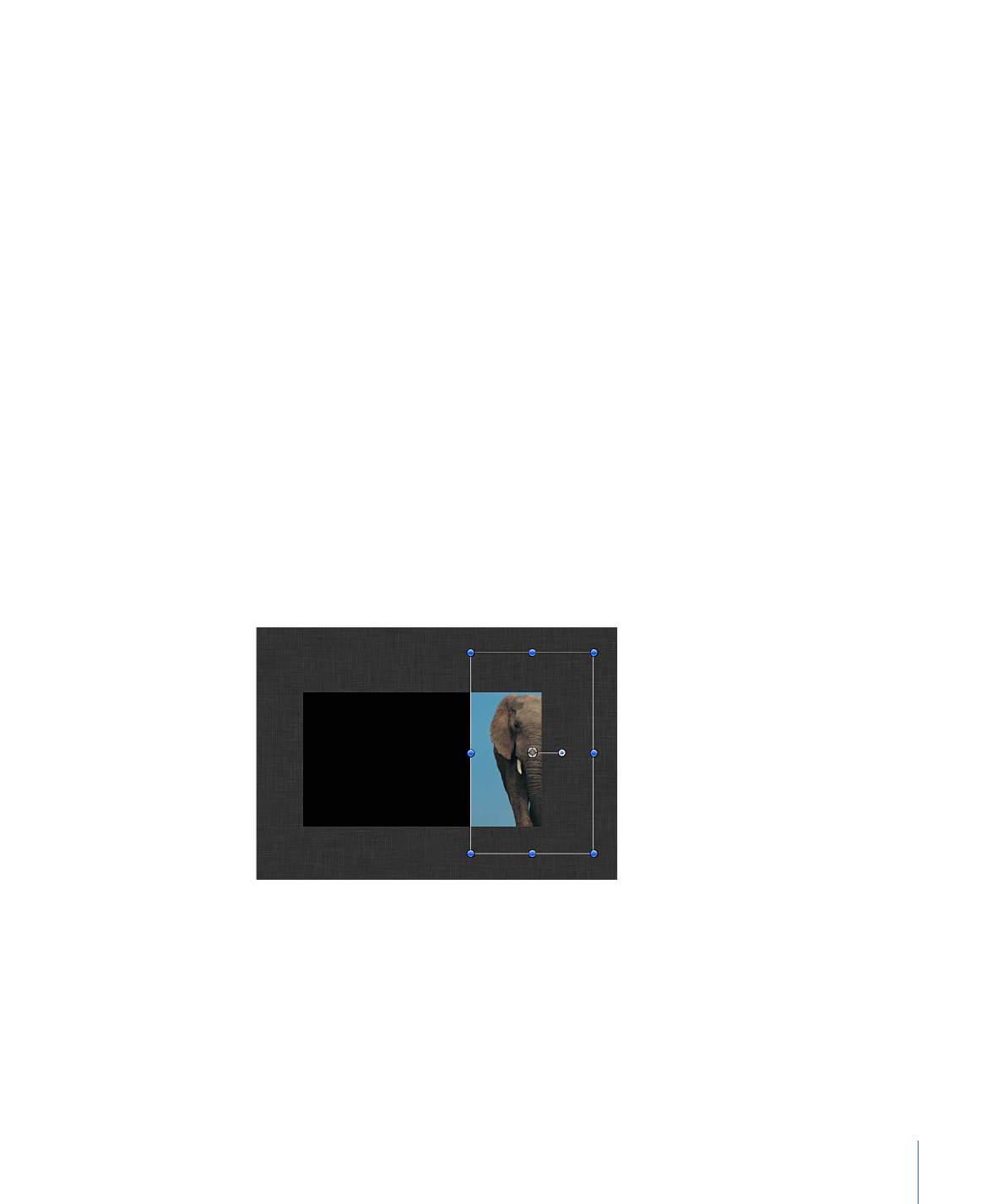
Moving Layers in the Canvas
The simplest thing you can do to start arranging the layers in your project is to move
them around. Except for the Drop Shadow tool, all transform tools let you reposition
layers, so this is the one operation you can perform regardless of the selected tool.
The easiest way to reposition a layer is to drag it in the Canvas. If you want to make more
precise adjustments to a layer’s position, you can also change the numerical values of a
layer’s X and Y Position parameters in the Properties Inspector. For more information on
layer properties, see
Parameters in the Properties Inspector
.
Pressing Shift while dragging constrains movement to the X or Y axis, even when working
in a 3D group.
You can move layers anywhere in the frame defined by the Canvas, but you can also drag
layers past the edge of the frame. By default, when you move a layer past the edge of
the frame, it becomes invisible, although you can still manipulate it using its bounding
box.
Note: The bounding box that indicates the position of layers located offscreen only
appears when those layers are selected.
You might need to move a layer past the edge of the frame when you plan on animating
a layer flying onscreen. Before animating it, you need to move it to a position offscreen
to achieve this effect.
Note: To make a layer that is partially or totally outside the Canvas visible, choose Show
Full View Area from the View pop-up menu (above the right side of the Canvas).
265
Chapter 7
Basic Compositing

To move layers in the Canvas
1
Select layers.
2
Do one of the following:
• Drag a layer to another location in the Canvas. If more than one layer is selected,
dragging one layer moves them all.
• Holding down the Command key, press the Right Arrow, Left Arrow, Up Arrow, or Down
Arrow key to nudge the selected layers one pixel at a time.
• Holding down the Command and Shift keys, press the Right Arrow, Left Arrow, Up
Arrow, or Down Arrow key to nudge the selected layers ten pixels at a time.
Tip: When repositioning very small layers, zoom into the Canvas to get a better view. For
information on zooming in the Canvas, see
Canvas Zoom Level
.
To move a layer in 3D space, you must select the 3D Transform tool or use the 3D onscreen
controls. For more information on moving layers in 3D space, see
3D Transform Tools
.
Using Canvas Compositional Aids
When arranging layers in the Canvas, take advantage of various compositional aids to
help you. For example, if you are working on a piece for broadcast or film, turn on the
safe zones in the Canvas to avoid putting layers past the title-safe or action-safe
boundaries. A grid and rulers can also be enabled to provide a useful reference, and
Dynamic Guides can be turned on to help you align layers with more precision.
Furthermore, snapping can be turned on and off to help you position layers relative to
the center and edges of the Canvas, with or without the other guides enabled.
Note: Press Command while you manipulate a layer to temporarily disable snapping,
allowing the layer to move freely.
For more information about enabling various Canvas options to help you lay out your
composition, see
Canvas Rulers
.
To duplicate a layer
Do one of the following:
µ
Select the layer to duplicate, then Option-drag the layer.
µ
Control-click the layer, then choose Duplicate from the shortcut menu.
A duplicate is created in the Canvas.
266
Chapter 7
Basic Compositing